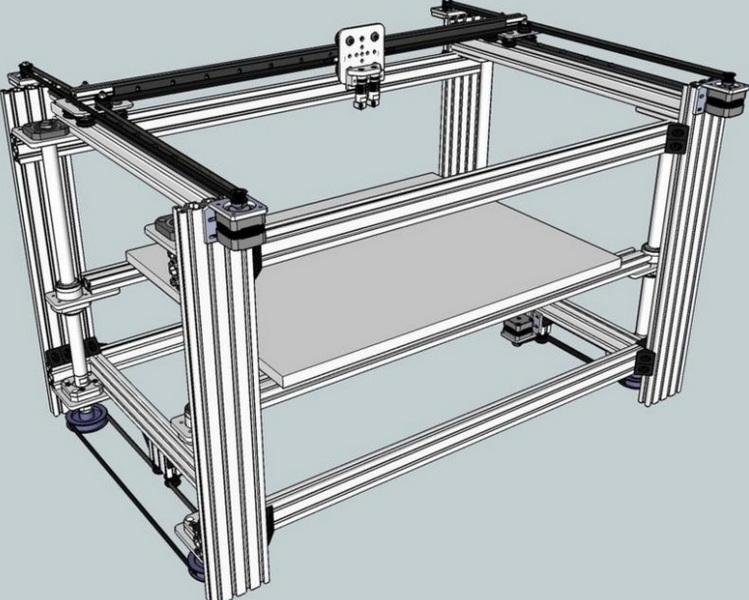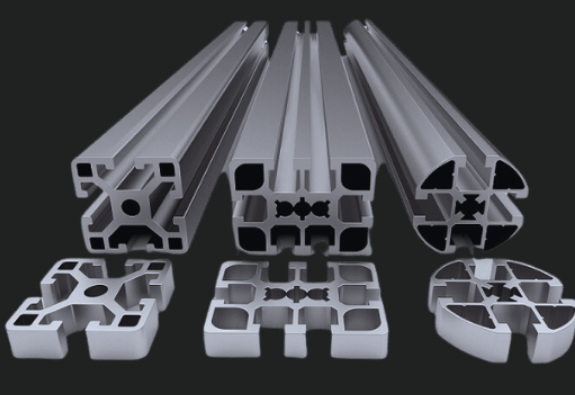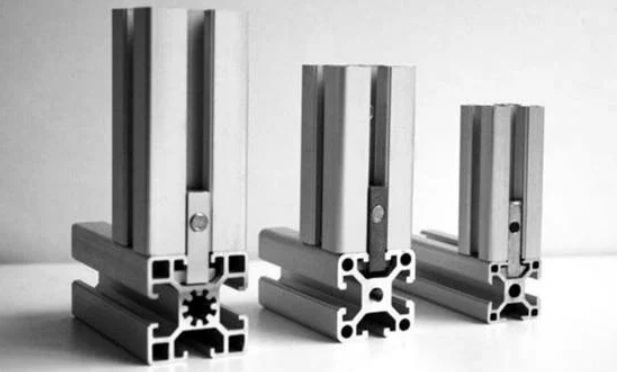Content Menu
● Introduction to Aluminum Extrusion
>> Basic Principles of Aluminum Extrusion
● Designing Your Homemade Aluminum Extruder
>> 1. Billet Preparation
>> 2. Die Design
>> 3. Pressure Application
>> 4. Cooling and Quenching
● Building Your Homemade Aluminum Extruder
>> Step-by-Step Construction
>> Challenges and Considerations
● Advanced Techniques and Considerations
>> Die Design Considerations
>> Material Selection and Properties
>> Post-Extrusion Processes
● Applications of Aluminum Extrusion
● Conclusion
● FAQs
>> 1. What is the cost of building a homemade aluminum extruder?
>> 2. Is it safe to build a homemade aluminum extruder?
>> 3. What are the limitations of a homemade aluminum extruder compared to industrial ones?
>> 4. Can I use any type of aluminum alloy for extrusion?
>> 5. How do I ensure the quality of the extruded aluminum profiles?
● Citations:
Building a homemade aluminum extruder is an ambitious project that requires careful planning, precise engineering, and a good understanding of metallurgy. Aluminum extrusion is a process where aluminum alloy is heated and forced through a die to create profiles of various shapes and sizes. This article will guide you through the process of creating a basic homemade aluminum extruder, highlighting the challenges and considerations involved.

Introduction to Aluminum Extrusion
Aluminum extrusion is a widely used manufacturing process in industries such as construction, automotive, and aerospace. It offers the advantage of producing lightweight yet strong components with complex cross-sectional profiles. However, setting up a full-scale extrusion facility is costly and requires significant investment in machinery and expertise.
Basic Principles of Aluminum Extrusion
The process involves heating aluminum billets to a malleable state and then pushing them through a die using high pressure. The die determines the final shape of the extruded aluminum profile. There are two main types of extrusion processes: direct and indirect. Direct extrusion is the most common method, where the billet is pushed through the die by a moving ram[2].
Designing Your Homemade Aluminum Extruder
Creating a homemade aluminum extruder involves designing and building a system capable of heating and applying pressure to the aluminum billet. Here are the key components and steps:
1. Billet Preparation
- Material Selection: Use forged aluminum alloy billets, as they have better mechanical properties than cast ones.
- Heating System: Design a heating system to raise the billet temperature to around 400°C to 500°C, depending on the alloy. This can be achieved using electric heaters or a furnace[1][2].
2. Die Design
- Shape and Material: The die should be made from a durable material like steel and designed to withstand high pressures. The die's shape determines the final profile of the extruded aluminum.
- Cooling System: Consider integrating a cooling system to maintain the die's temperature and prevent overheating, which can affect the extrusion quality[2].
3. Pressure Application
- Press Mechanism: Use a hydraulic or mechanical press to apply pressure. For a DIY setup, a bottle jack press can be adapted. However, achieving the high pressures required for aluminum extrusion (often exceeding 15,000 tons) is challenging with homemade equipment[2][5].
- Safety Measures: Ensure safety by using protective gear and designing the system to prevent accidents. High-pressure systems can be dangerous if not properly managed[3].
4. Cooling and Quenching
- Quenching Process: After extrusion, the aluminum needs to be rapidly cooled to achieve the desired mechanical properties. This can be done using water baths or air jets[6].
- Cooling Methods: The choice of cooling method depends on the desired properties of the final product. Water quenching is faster but may cause distortion, while air cooling is slower but less likely to cause warping[6].

Building Your Homemade Aluminum Extruder
Step-by-Step Construction
1. Prepare the Workspace: Ensure a clean and well-ventilated workspace to dissipate heat and fumes generated during the extrusion process[3].
2. Assemble the Heating System: Use a water heater element controlled by an Arduino setup to heat the billet. This allows for precise temperature control.
3. Construct the Press: Adapt a bottle jack press for applying pressure. However, this may not provide the high pressures needed for efficient extrusion.
4. Design and Machine the Die: Use a CNC machine or manual machining tools to create the die. The die's design is critical for achieving the desired profile.
5. Integrate Cooling System: Set up a quenching system using water or air to cool the extruded aluminum rapidly.
Challenges and Considerations
- Safety Risks: High temperatures and pressures pose significant safety risks. Adequate ventilation, fire safety measures, and emergency response plans are essential[3].
- Material Limitations: Achieving uniform heating and precise control over the extrusion process can be challenging with DIY setups.
- Cost and Complexity: Building a functional homemade extruder requires significant investment in materials and tools. The complexity of the process often makes it impractical for small-scale production.
Advanced Techniques and Considerations
Die Design Considerations
When designing the die, consider the lead angle for every edge of the profile. Incorrect angles can cause defects such as folding, where the outer skin of the billet gets sucked into the middle of the part, leading to cracks[5]. Additionally, creating sharp corners is challenging with extrusion; rounded corners are more feasible[4].
Material Selection and Properties
The choice of aluminum alloy affects the final properties of the extruded product. Different alloys have varying strengths, corrosion resistances, and thermal conductivities. Forging is preferred over casting for billets due to better mechanical properties[1].
Post-Extrusion Processes
After extrusion, additional processes like aging, straightening, and surface treatments can enhance the properties and appearance of the aluminum profiles. Aging involves heating the extruded aluminum at a controlled temperature to increase its strength and hardness[6]. Surface treatments such as anodizing or powder coating provide corrosion resistance and improve aesthetics[6].
Applications of Aluminum Extrusion
Aluminum extrusions are widely used in various industries due to their versatility and advantages. In construction, they are used for window frames and structural components. In the automotive sector, extrusions are used for lightweight vehicle parts. Aerospace applications benefit from the high strength-to-weight ratio of extruded aluminum components[1].
Conclusion
Building a homemade aluminum extruder is a complex project that involves careful planning, precise engineering, and significant safety precautions. While it can be an educational and rewarding endeavor, it may not be practical for large-scale production due to limitations in control and consistency. For most applications, purchasing extruded aluminum profiles from professional manufacturers is more efficient and cost-effective.

FAQs
1. What is the cost of building a homemade aluminum extruder?
The cost can vary widely depending on the materials and tools used. A basic setup might start at a few hundred dollars for heating and pressing components, but a more sophisticated system could cost several thousand dollars.
2. Is it safe to build a homemade aluminum extruder?
Safety is a major concern due to high temperatures and pressures involved. Proper safety measures, including protective gear and a well-designed system, are essential to prevent accidents.
3. What are the limitations of a homemade aluminum extruder compared to industrial ones?
Homemade extruders typically lack the precision and control of industrial systems, leading to variability in product quality and consistency. They are also limited in scale and complexity.
4. Can I use any type of aluminum alloy for extrusion?
Not all aluminum alloys are suitable for extrusion. Forged alloys are preferred due to their better mechanical properties. The choice of alloy depends on the desired properties of the final product.
5. How do I ensure the quality of the extruded aluminum profiles?
Quality control involves checking for dimensional accuracy, surface defects, and mechanical properties. This may require specialized equipment and expertise, which can be challenging in a DIY setup.
Citations:
[1] https://essengoldparts.com/blog/extruded-aluminum/
[2] https://www.rapiddirect.com/blog/aluminum-extrusion-process/
[3] https://www.yjing-extrusion.com/what-are-the-key-safety-measures-for-alco-aluminum-extrusion-press.html
[4] https://rpmindinc.com/3-common-challenges-associated-extruded-aluminum-shapes-manufacturing/
[5] https://www.reddit.com/r/Skookum/comments/bf646d/small_scale_hobbyhome_made_aluminum_extruder/
[6] https://jmaluminium.com/what-is-aluminum-extrusion-the-process-in-10-steps/
[7] https://www.instructables.com/Lets-Make-a-Simple-Extruded-Aluminum-Display-Cube/
[8] https://www.otalum.com/common-faults-and-solutions-in-the-work-of-aluminum-extruder.html
[9] https://hackaday.com/2021/05/25/getting-started-with-aluminum-extrusions/
[10] https://anglelock.com/blog/aluminum-extrusion-design-guide
[11] https://www.outashi.com/blog/safety-precautions-in-operating-aluminum-extrusion-machine-id35.html
[12] https://www.yjing-extrusion.com/how-do-you-choose-the-best-aluminum-extruder-kit-for-diy-applications.html
[13] https://profileprecisionextrusions.com/challenges-of-aluminum-extrusion-manufacturing/
[14] https://blog.airlinehyd.com/how-to-build-anything-with-aluminum-extrusion-in-3-steps
[15] https://jieyatwinscrew.com/blog/80-20-aluminum-extrusion/
[16] https://www.machine4aluminium.com/precautions-in-selection-of-aluminum-extrusion-machine/
[17] https://tri-stateal.com/resources/extrusion-guide/
[18] https://www.zetwerk.com/aluminum-extrusions/
[19] https://www.youtube.com/watch?v=CwGimohCH8A
[20] https://www.yjing-extrusion.com/how-to-maintain-an-aluminum-extrusion-press-for-optimal-performance.html






















